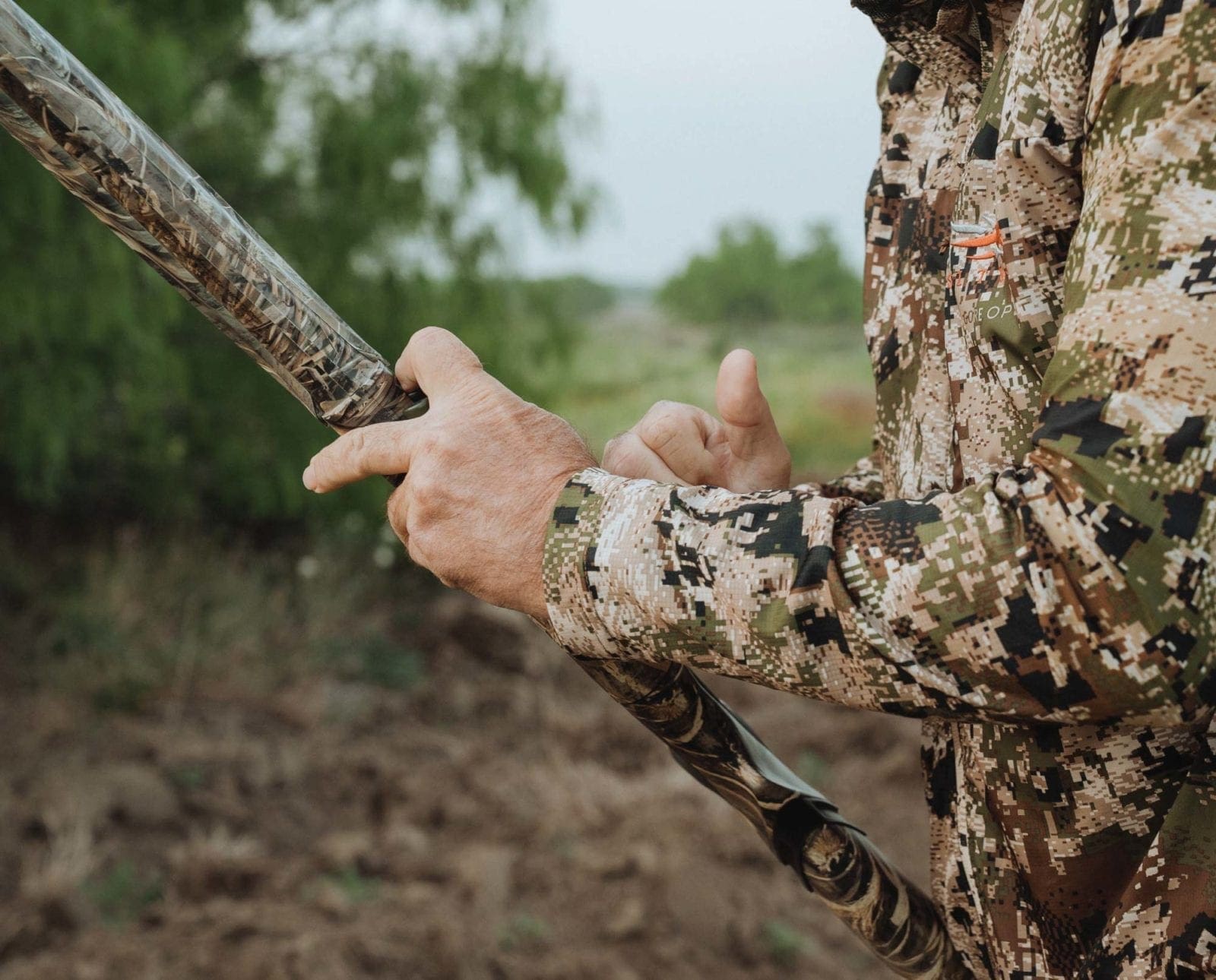Home » Dove Hunting » Choosing a Shotgun for Dove Hunting
Choosing a Shotgun for Dove Hunting

Edgar Castillo is a recently retired law enforcement officer for…
Weighing the pros and cons of shotguns for dove hunting
Dove hunting is perhaps the easiest of the wing shooting disciplines. It is fundamentally the most basic of all hunting, a social hunt or shoot more than anything else. Dove hunting doesn’t require an abundance of gear or preparation. The most that must be done is a bit of legwork in the form of a little preseason scouting to find concentrations of doves. Once out in the field and after choosing the best spot to shoot at incoming or passing doves, it’s pretty clear and easy what needs to be done. Add in a variety of dove species like mourning dove, white-winged dove, white-tipped dove, Eurasian collared-dove, and many others and the opportunity grows.
Almost any shotgun is suitable to knock down those gray rockets from the sky. Gather up a group of dove hunters in a sunflower field, and you’ll see everything from camouflaged duck guns to heirloom doubles and everything in between. Shooters can select plain or fancy, double-barreled, semi-automatic or pump-action shotguns. All allow for fast follow-up shots. The most common shotguns found in the dove fields are 20-, 16- or 12-gauge.
The big 12-gauge semi-auto takes center stage as the most popular. This is in part due to a dove’s ability to be difficult to hit because of their fast and erratic flight maneuverability. Many dove hunters prefer autoloaders, which allow for three quick shots before the birds get out of range. Dove hunters should be aware that repeating shotguns, which include both pump action and semi-automatic, have tubular magazines. These types of shotguns MUST be limited to holding only three shells (i.e., “plugged”) while dove hunting. Federal regulations require that when hunting migratory birds, including the common dove, the tubular magazine must have a plug inserted so that the total holding capacity of the shotgun does not exceed three shot-shells (one in the chamber, two in the magazine).
Many wing shooters consider the 20-gauge to be the perfect gauge shotgun for almost all upland shooting, and regard this as the ideal choice for the dove fields. Its light weight, quick maneuverability and wide range of dove loads offered make it a favorite for September doves. Sixteen gauge aficionados will argue their case that the “Sweet 16” is the all-around perfect shotgun. Sixteen gauge loads, however, are typically harder to find.
That is not to say the refined 28-gauge cannot be used in the dove fields. I have seen some deadly shooters using the 28 to control the dove population in their respective field of fire. Even rarer is the user of the .410 caliber. Which one you carry into the field depends mostly on personal choice, comfort, familiarity and experience.
On a national average, there are 7 shots expended per dove harvested. Doves are very fast and small, so a shotgun with an open or modified choke is ideal. This will allow the shot to spread out and create a larger pattern. Shooters should stick to smaller shot sizes: 6, 7, 7-1/2, 8 or 9. This range of shot is best suited for both early and late season dove shoots. It doesn’t take a whole lot of pellets to bring down a dove, and smaller shot sizes offer more pellets down range. The 16- and 12-gauge give the dove hunter the option of screwing in a tighter shotgun choke. Combined with heavier loads, it allows for somewhat longer shots on days the birds are flying high. Dove hunters should leave the 3- and 3-1/2 inch magnums at home. Standard 2-3/4 inch shells deliver plenty of payload and options for doves.
Dove hunters should pay attention to area rules and regulations pertaining to the type of shot allowed. While lead is still the most popular shot material for hunting doves, shooters should check their respective state regulations. Many areas managed by the state require steel or other non-toxic shot (tungsten or bismuth) when dove hunting on public accessed lands.
Shooting skills are definitely a factor for each dove hunter. Bring along more shot shells than you think you’ll need as these gray rockets can prove even the most skilled shooter wrong.
Edgar Castillo is a recently retired law enforcement officer for a large Kansas City metropolitan agency. He also served in the United States Marine Corps for twelve years. Edgar longs for the colors of autumn and frosty, winter days so he can explore the landscapes in search of wild birds in wild places. His passion lies in the uplands as he self-documents his travels across public lands throughout Kansas hunting open fields, walking treelines, & bustin’ through plum thickets.



